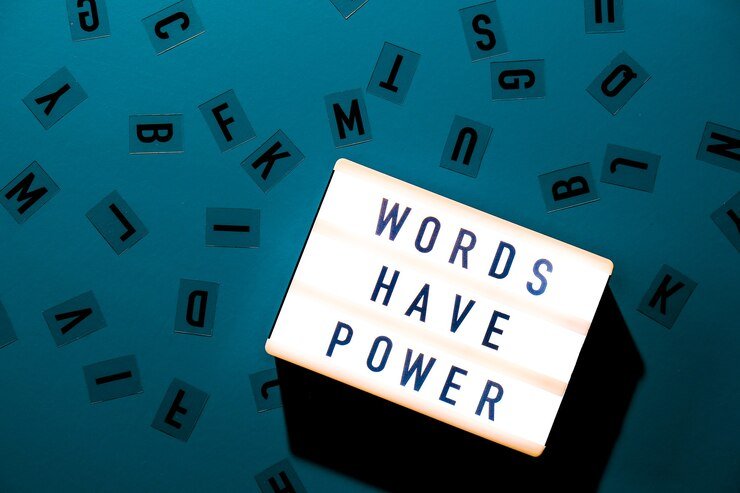A Step-by-Step Guide to Using wordplays

Introduction wordplays
Language is a playground for the creative mind. For writers, bloggers, and language enthusiasts, wordplays offer a delightful way to engage with words on a deeper level. But what exactly are wordplays, and why do they hold such significance in language and literature? This blog post is your go-to guide for understanding the magic of wordplays and how to incorporate them into your writing to captivate your audience.
In this article, we will explore various types of wordplays, provide tips for crafting them, and examine their impact on literature, pop culture, and even SEO. Whether you’re a seasoned writer or a language newbie, you’ll find valuable insights to enrich your creative endeavors.
Types of Wordplays
Puns
Puns are the most common form of wordplay and can be a writer’s best friend or worst foe. A pun plays on words that have multiple meanings or sound similar but have different meanings. Take, for example, “Time flies like an arrow; fruit flies like a banana.” The double meaning of “flies” creates a humorous twist.
Puns can be used in various contexts, from casual conversation to literary masterpieces. They add humor and wit, making your content more engaging. However, it’s crucial to know your audience, as not everyone appreciates the cleverness of a well-placed pun.
Anagrams
Anagrams are another fascinating type of wordplay where you rearrange the letters of a word or phrase to form a new one. For example, “listen” becomes “silent” when its letters are rearranged.
Anagrams can serve as hidden messages or reveal interesting connections between words. They’re perfect for puzzles and games, but they can also add a layer of depth to your writing. Imagine unveiling a character’s true nature through an anagram of their name—it’s a subtle yet powerful literary device.
Palindromes
A palindrome reads the same backward as forward, like “madam” or “racecar.” These symmetrical wordplays create a sense of balance and can be surprisingly poetic.
In literature and poetry, palindromes add a rhythmic quality to the text. They can also be used in branding and product names to create memorable and catchy titles. The beauty of a palindrome lies in its simplicity and elegance, making it a timeless wordplay technique.
Spoonerisms
Spoonerisms involve swapping the initial sounds or letters of two words to create a humorous effect. For instance, “It is kisstomary to cuss the bride” instead of “It is customary to kiss the bride.”
Spoonerisms are great for lightening the mood and adding a playful touch to your writing. They are particularly effective in dialogues, as they can showcase a character’s quirky personality or momentary confusion.
Portmanteaus
Portmanteaus combine two words to create a new one, like “brunch” (breakfast + lunch) or “smog” (smoke + fog). These blends are not only fun to create but also highly functional, as they convey complex ideas succinctly.
In today’s fast-paced world, portmanteaus are increasingly popular in marketing and social media. They offer a creative way to coin new terms and concepts, making your content stand out.
The Art of Crafting Wordplays
Know Your Audience
The effectiveness of wordplays largely depends on your audience. While some readers may appreciate the cleverness of a pun, others might find it distracting. Understanding your audience’s preferences will help you choose the right type of wordplay.
For instance, if you’re writing for a younger audience, playful and straightforward puns might work best. On the other hand, a more mature audience might appreciate the subtlety of anagrams or palindromes.
Context Matters
Context is crucial when it comes to crafting wordplays. A pun that fits seamlessly into the narrative will be more effective than one that feels forced. Ensure that your wordplay enhances the overall message rather than detracting from it.
Consider the tone and setting of your writing. A dark, serious story might not be the best place for a lighthearted spoonerism. Conversely, a humorous blog post can benefit greatly from clever wordplay.
Practice Makes Perfect
Like any other writing technique, mastering wordplays requires practice. Start by experimenting with different types and see which ones come naturally to you. Don’t be afraid to revise and refine your wordplays until they fit perfectly into your writing.
You can also learn from the wordplays masters. Study how great writers and poets use wordplays and try to emulate their techniques. Over time, you’ll develop your unique style and become more confident in your wordplay abilities.
Wordplays in Literature and Pop Culture

Literature
Wordplays have been a staple in literature for centuries. Shakespeare, often considered the master of wordplay, used puns extensively in his works. In “Romeo and Juliet,” Mercutio’s witty puns add humor and levity to the otherwise tragic story.
Modern literature also embraces wordplays. J.K. Rowling’s “Harry Potter” series is filled with clever names and spells, many of which are anagrams or puns. These wordplays add a layer of richness to the story and make it more enjoyable for readers.
Movies and TV Shows
Wordplays are not limited to written text; they also play a significant role in visual storytelling. Movies and TV shows often use puns and other wordplays to create memorable lines and scenes. For instance, the animated series “The Simpsons” is known for its clever use of puns and sight gags.
In “Toy Story,” Buzz Lightyear’s catchphrase, “To infinity and beyond!” is a play on words that has become iconic. These wordplays not only entertain the audience but also make the characters and stories more memorable.
Music
Music is another medium that embraces wordplays. Songwriters often use puns, metaphors, and other wordplays to add depth and complexity to their lyrics. For example, The Beatles’ song “Lucy in the Sky with Diamonds” is rumored to be a subtle reference to LSD, though the band has denied this.
Hip-hop, in particular, is known for its wordplay prowess. Rappers like Eminem and Lil Wayne are masters of clever wordplays, using them to convey complex ideas and emotions in a compact format.
Wordplays for Blogging and Writing
Engage Your Readers
Wordplays are an excellent tool for engaging your readers. A well-placed pun or clever anagram can capture your audience’s attention and make your content more enjoyable to read. Use wordplays to add humor and wit to your blog posts, articles, and creative writing.
Consider starting your blog post with a catchy wordplay to hook your readers. For example, if you’re writing about coffee, you could start with, “Espresso yourself with these coffee tips.” This playful introduction sets the tone for the rest of the post.
Enhance Your Message
Wordplays can also enhance the message you’re trying to convey. They can make your writing more memorable and impactful. For instance, a portmanteau can succinctly convey a complex concept, while a palindrome can add a poetic touch to your text.
Use wordplays to emphasize key points and make your content more relatable. For example, if you’re writing about fitness, you could use a pun like, “No pain, no gain, but a little humor can’t hurt.”
Boost Your Creativity
Incorporating wordplays into your writing can boost your creativity. It challenges you to think outside the box and come up with unique ways to express your ideas. This creative exercise can improve your overall writing skills and make your content stand out.
Don’t be afraid to experiment with different types of wordplays. Mix and match them to create a unique style that resonates with your audience. The more you practice, the more confident you’ll become in using wordplays effectively.
SEO Benefits of Wordplays
Improve Engagement
Wordplays can improve engagement by making your content more enjoyable to read. Engaged readers are more likely to spend more time on your site, share your content, and return for more. All these factors contribute to better SEO performance.
A clever pun or an intriguing anagram can catch the reader’s eye and encourage them to continue reading. This increased engagement signals to search engines that your content is valuable, which can boost your search rankings.
Increase Shareability
Content that incorporates wordplays is more likely to be shared on social media. People love to share clever, witty, and humorous content. By making your content more shareable, you can increase its reach and attract more visitors to your site.
Encourage your readers to share your content by including social sharing buttons and a call to action. For example, you could say, “Did you enjoy these wordplays? Share this post with your friends and spread the fun!”
Enhance Readability
Wordplays can enhance the readability of your content by breaking up the text and adding variety. This makes your content more engaging and easier to read. Readable content is more likely to be appreciated by your audience and rewarded by search engines.
Use wordplays to create catchy headings and subheadings. This not only improves readability but also makes your content more scannable. Readers can quickly find the information they’re looking for, which improves their overall experience on your site.
Conclusion
Wordplays are a powerful tool for writers, bloggers, and language enthusiasts. They add humor, wit, and depth to your writing, making it more engaging and memorable. By incorporating wordplays into your content, you can captivate your audience and improve your SEO performance.
Experiment with different types of wordplays and find the ones that resonate with your audience. Whether you’re writing a blog post, a novel, or a social media update, wordplays can elevate your writing and make it stand out.




